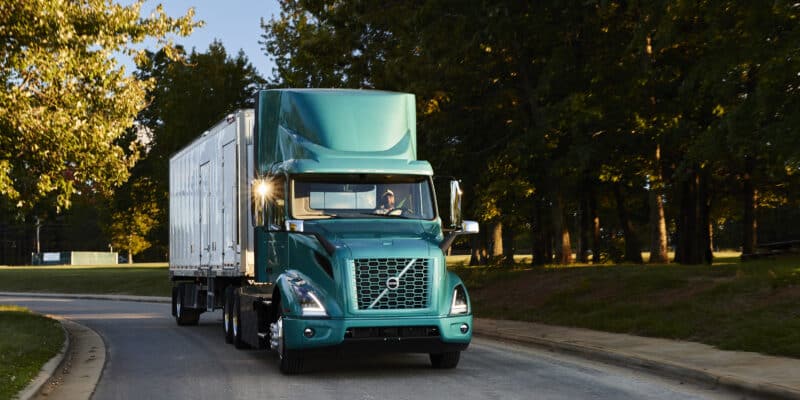EVs are finally here: What going electric means for freight in 2023

The gears have long been set in motion for businesses to integrate electric trucks into their shipping operations. Now, the first wave of EVs are hitting the road, leading the way toward decarbonizing supply chains.
In 2020, the global market for electric trucks reached $392 million, and it’s set to exceed $3.8 billion by 2030. Widespread EV integration is an inevitable byproduct of the push toward sustainable transportation. EVs help businesses reduce their carbon footprint, improve local air quality, and provide a better driver experience. They also limit reliance on volatile fuel prices, creating potential cost savings in the long run.
In February, Uber Freight announced a pilot program with WattEV, which will leverage a digital freight network to connect shippers with an all-electric heavy-duty transportation platform. WattEV will provide electric trucking capacity to Uber Freight shippers on select routes in Southern California, starting with CHEP. The pilot is a key milestone in electric-powered transportation.
The rise of EVs is a catalyst to furthering sustainability goals in transportation. Shippers have an opportunity to revisit their transportation strategy now and pinpoint where their network can most benefit from integrating electric trucks.
Going electric saves money—and our environment
Electric trucks have only been available for real-world testing within the last decade. With how new the technology is, it’s easy to assume that electrification would be an expensive venture—or that it’s not a profitable investment. But early adopters will save money in the long run and, in certain use cases, cut immediate costs by deploying EVs on ideal mission profiles.
Historically, fuel prices have been extremely volatile. In the last decade, gas prices have oscillated from anywhere between $1.50 and $5 per gallon nationwide. In early 2023, the price of gas reached the highest level we’ve seen in 20 years. EVs present a more reliable alternative to the volatile gas market.
Shippers can easily manage electricity costs by using EVs. Say that a business has already installed several on-site charging stations across its network. By signing multi-year electricity supply contracts, the business can now save on long-term operational costs by keeping fixed energy prices for an extended period of time.
Businesses can also leverage incentives that ease the burden of transitioning to clean energy. From grants for zero-emission port equipment and vehicles to subsidies covering battery-charging infrastructure costs, many states offer support to organizations that are taking steps to switch to electric trucks. For example, California’s Hybrid and Zero-Emission Truck and Bus Voucher Incentive Project (HVIP) is a government-led initiative that provides point-of-sale vouchers to make electric or hybrid vehicles more affordable.
Above all, the impact that electric trucks have on our environment and our health is evident. Studies show that electrification of freight transportation can lead to significant pollution reductions. By eliminating all toxic emissions produced by engines, EVs can make a massive difference in the quality of the air we breathe. Disadvantaged communities also face higher exposure to air pollutants and are at greater risk of developing respiratory illnesses. One report estimates that switching entirely to EVs now would help reduce air pollution and avoid as many as 170,000 premature deaths by 2050.
EVs improve the carrier experience
The cost of maintaining a gas-powered truck is 20% higher than what it was in 2020. A shortage of service technicians and available parts, combined with complex repairs for higher-mileage vehicles, have contributed to maintenance delays and price hikes. Increased downtime from delays also exacerbates lost revenue, making the process even more wasteful for carriers.
Electric trucks typically don’t require any oil changes or coolant checks. There are fewer fluids and moving parts in an EV, making maintenance much easier. While most battery systems have a limited number of charging cycles, they are purposefully designed to sustain the expected lifetime of the vehicle itself—which can last well over 10 years.
Although some studies indicate that truck drivers aren’t too keen on making the transition to non-diesel drivetrains, the benefits are apparent when they get behind the wheel. Driver feedback from Uber Freight’s pilot program indicates that EVs can provide smoother rides due to reduced noise and vibration, and enhanced comfort.
What’s next on the EV horizon for shippers and carriers?
Going electric is no longer an experimental idea. EVs are already delivering goods to end-customers as we speak. Identifying the most attractive loads for EV conversion is vital to keeping up with evolving industry standards around sustainability. Looking ahead, a solid plan of execution is needed to drive EV efficiency.
Shippers and carriers have to consider a wide range of factors as they become more sustainable, from payload restrictions and fuel efficiency to development costs and infrastructure availability. Analyze your existing geographies, lanes, and the types of freight being moved, and consider investing more resources into identifying and converting EV eligible loads. Prepare in advance by incorporating additional flexibility around appointment times, and proactively communicate with your incumbent carriers to establish a strong foundation of trust before diving in.
Finally, make sure your leadership team is aligned on a practical implementation roadmap. Implementation will become more accessible as the market matures and production volumes increase. Discuss short-term and long-term sustainability goals that are realistic for your business. Educate your teammates on the impact of electrification and how it will affect your network.
As more EVs hit the road, shippers and carriers should continue working to achieve more productive miles and bring further transparency to their emissions output. Starting the process of electrification is a crucial step forward in the journey to reducing our carbon footprint.
Want to learn more about how Uber Freight can help shippers achieve their sustainability goals? Get the download here.



